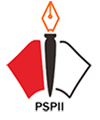Understanding the Cognition Process of the Students using the Internet as a Learning Resource
DOI:
https://doi.org/10.15575/jpi.v3i1.928Keywords:
Bloom’s Taxonomy, Online Sources, The Source of Learning.Abstract
This study aims to investigate how students search and process the information found on the Internet to meet the needs of their academic tasks as well as how they view such information compared to printed materials. The study was conducted targeting the student teachers at Primary School Teacher Education (PGMI) Program and Kindergarten Teacher Education Program (PGRA) in State Islamic University Sunan Ampel Surabaya. Such information search and processing are then later viewed through the lens of Blooms’ taxonomy. A qualitative method using the phenomenological approach is adopted in the study. Nine student participants of 1st, 2nd, 3rd-year classes were interviewed. The study indicates that the presence of the Internet as a source of learning has not shifted the role of the textbook as a primary source of information for the students while working on their academic assignments. It was revealed that the information search activities on the Internet have facilitated students to experience the four domains of the learning process in Bloom's Taxonomy.
Â
References
Abrami, P.C., Apollonia, S., & Rosenfield, S. (1997). Effective teaching in higher education. In J. C. Perry, R.P., Smart (Ed.), Effective teaching in higher education: research and practice (pp. 321–369). New York: Agathon Press.
Allen, D., & Young, M. (1997). From tour guide to teacher: Deepening cross-cultural competence through international experience-based education. Journal of Management Education, 2(21), 168–189.
Athanassiou, N., & Mcnett, J. M. (2003). Critical thinking in the management classroom : Bloom ’ s taxonomy as a learning tool. Journal of Management Education, 27(5), 533–555. https://doi.org/10.1177/1052562903252515
Becker, N. J. (2003). Google in perspective: understanding and enhancing student search skills. New Review of Academic Librarianship, 9(1), 84–99. https://doi.org/10.1080/13614530410001692059
Bowman, N. D., & Akcaoglu, M. (2014). “I see smart people!â€: using facebook to supplement cognitive and affective learning in the university mass lecture. The Internet and Higher Education, 23, 1–8. https://doi.org/10.1016/j.iheduc.2014.05.003
George, C., Bright, A., Hurlbert, T., Linke, E., St. Clair, G., & Stein, J. (2006). Scholarly use of information: graduate students’ information seeking behaviour. Information Research, 11(4).
J. Stefl-Mabry. (2003). A social judgment analysis of information source preference profiles: An exploratory study to empirically represent media selection patterns. Journal of the Association for Information Science and Technology, 55(9), 879–904.
J. W. Creswell. (2007). Qualitative inquiry and research design: choosing among five aproaches (2nd ed.). London: SAGE Publications.
Jansen, B. J., Smith, B., & Booth, D. L. (2007). Understanding web search via a learning paradigm. Journal of the American Society for Information Science, 1207–1208. https://doi.org/10.1145/1242572.1242768
Kemkominfo. (2014). Pengguna internet mencapai 82 juta orang. Retrieved December 23, 2016, from https://kominfo.go.id/index.php/content/detail/3980/Kemkominfo%3A+Pengguna+Internet+di+Indonesia+Capai+82+Juta/0/berita_satker
Kharea, S. K., Thapa, N., & Sahoo, K. C. (2007). Internet as a source of information: a survey of Ph.D scholars. Annals of Library & Information Studies, 54(4), 5.
Lin, P. C., Hou, H. T., Wang, S. M., & Chang, K. E. (2013). Analyzing knowledge dimensions and cognitive process of a project-based online discussion instructional activity using facebook in an adult and continuing education course. Computers and Education, 60(1), 110–121. https://doi.org/10.1016/j.compedu.2012.07.017
Lin, P. C., Hou, H. T., Wu, S. Y., & Chang, K. E. (2014). Exploring college students’ cognitive processing patterns during a collaborative problem-solving teaching activity integrating Facebook discussion and simulation tools. Internet and Higher Education, 22, 51–56. https://doi.org/10.1016/j.iheduc.2014.05.001
Melgoza, Pauline, Mennel, Pamela A., Gyeszly, S. D. (2002). Information oveload. Journal Collection Building, I(1), 32–43. https://doi.org/http://dx.doi.org/10.1108/01604950210414706
Pan, B., Hembrooke, H., Joachims, T., Lorigo, L., Gay, G., & Granka, L. (2007). In google we trust: users’ decisions on rank, position, and relevance. Journal of Computer-Mediated Communication, 12(3), 801–823. https://doi.org/10.1111/j.1083-6101.2007.00351.x
Rieh, S. Y., & Hilligoss, B. (2007). College Students’ credibility judgments in the information-seeking process. The John D. and Catherine T. MacArthur Foundation Series on Digital Media and Learning, 49–71. https://doi.org/10.1162/dmal.9780262562324.049
Robert H Schrimsher, Lori A Northrup, S. P. A. (2011). A survey of samford university students regarding plagiarism and academic misconduct. International Journal for Educational Integrity, 7(1).
Rovai, A. P., Wighting, M. J., Baker, J. D., & Grooms, L. D. (2009). Development of an instrument to measure perceived cognitive, affective, and psychomotor learning in traditional and virtual classroom higher education settings. Internet and Higher Education, 12(1), 7–13. https://doi.org/10.1016/j.iheduc.2008.10.002
Selwyn, N., & Gorard, S. (2016). Students’ use of wikipedia as an academic resource — Patterns of use and perceptions of usefulness. The Internet and Higher Education, 28, 28–34. https://doi.org/10.1016/j.iheduc.2015.08.004
Yeni, S. (2012). An analysis on teachers’ and teacher candidates’ usage of internet based materials and awareness of learning objects. Procedia - Social and Behavioral Sciences, 46, 1914–1918. https://doi.org/10.1016/j.sbspro.2012.05.402
Downloads
Published
Issue
Section
License
Authors who publish with this journal agree to the following terms:
- Authors retain copyright and grant the journal right of first publication with the work simultaneously licensed under a Attribution-ShareAlike 4.0 International (CC BY-SA 4.0) License that allows others to share the work with an acknowledgment of the work's authorship and initial publication in this journal.
- Authors are able to enter into separate, additional contractual arrangements for the non-exclusive distribution of the journal's published version of the work (e.g., post it to an institutional repository or publish it in a book), with an acknowledgment of its initial publication in this journal.
- Authors are permitted and encouraged to post their work online (e.g., in institutional repositories or on their website) prior to and during the submission process, as it can lead to productive exchanges, as well as earlier and greater citation of published work (See The Effect of Open Access).






